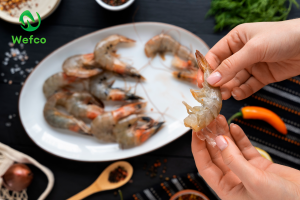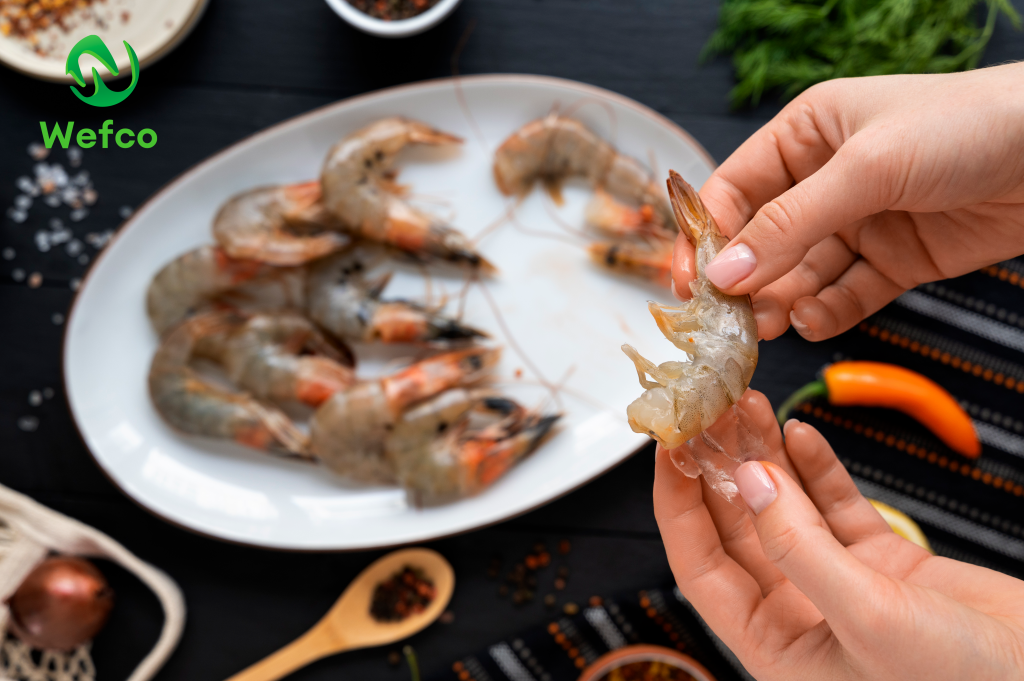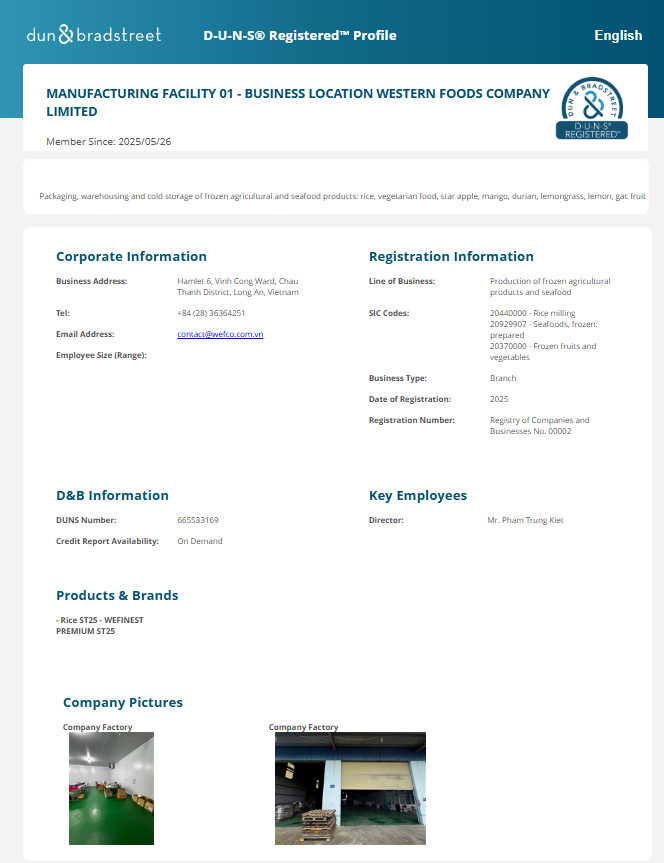Shrimp is a popular seafood choice due to its delicate flavor, versatile culinary uses, and many health benefits. However, to maintain its quality and safety, proper storage is essential. Today Wefco this guide will walk you through the best practices for storing shrimp to ensure they stay fresh and delicious.

- Understand shrimp types and their storage needs
Different types of shrimp require slightly different storage methods. Whether you have fresh, frozen, cooked, or raw shrimp, so Wefco recommends that you learn the specific processing of each type to maintain the best quality.
- Store fresh shrimp
Fresh shrimp should be consumed as soon as possible for the best flavor and texture. However, if you need to store them, Wefco recommends that you follow these steps:
- Refrigerate: Place the shrimp in a bowl covered with ice and store in the coldest part of the refrigerator. Change the ice daily to keep the shrimp fresh. Fresh shrimp can last up to two days in the refrigerator.
- Avoid water: Do not store shrimp directly in the water. This can cause the shrimp to become mushy and lose their flavor.
- Freezing shrimp
Freezing is a great way to extend the shelf life of shrimp. Wefco shows how to do it correctly for two types:
- Raw shrimp: To freeze raw shrimp, rinse them under cold water, dry them with paper towels, and place them in an airtight container or freezer bag. Remove as much air as possible before sealing. Label the container with the date.
- Cooked shrimp: Allow the cooked shrimp to cool completely before freezing. Place them in an airtight container or freezer bag, making sure there is no more air inside. Label and date the package.
- Defrost frozen shrimp
Proper defrosting is crucial for maintaining the texture and flavor of the shrimp. Here are two safety methods:
- Defrost the refrigerator: Transfer the frozen shrimp to the refrigerator and let them thaw overnight. This method ensures even defrosting and keeping the shrimp at a safe temperature.
- Defrost with cold water: Place the frozen shrimp in an airtight plastic bag and soak them in cold water. Change the water every 30 minutes until the shrimp are completely thawed. Do not use warm or hot water, as this may promote the growth of bacteria.
- Avoid cross-contamination
Prevent cross-contamination by properly handling shrimp:
- Separate storage: Store shrimp away from other foods, especially raw meat and poultry.
- Clean surfaces: Always wash hands, cutting boards, and utensils thoroughly with hot, soapy water before and after handling shrimp.
- Tips for buying shrimp
Proper storage starts with the purchase of high-quality shrimp. Wefco will show you some signs of freshness:
- Appearance: Fresh shrimp should have a matte and slightly shiny appearance. Avoid shrimp with black spots or odors.
- Texture: The meat should be firm and elastic, not slimy or mushy.
- Use shrimp before it spoils
Even with proper storage, shrimp should be used within a reasonable time frame:
- Fresh shrimp: Use within two days of purchase.
- Frozen shrimp: Use within three to six months for the best quality.
Finish
By following these storage tips, you can ensure that your shrimp remains fresh, safe, and delicious. Whether you’re storing fresh shrimp in the fridge or keeping a frozen shrimp stock for future meals, proper handling is key to enjoying this delightful seafood in the best way. Please contact Wefco immediately if you want to buy the most delicious, nutritious and safe shrimp.





